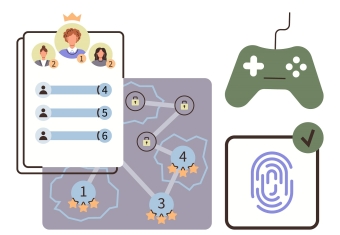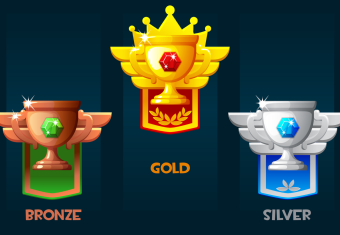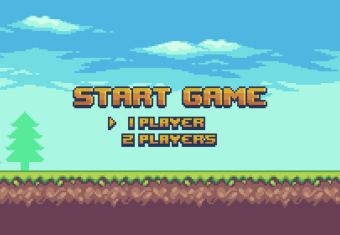Artificial Intelligence (AI). It’s the buzzword that has been getting thrown around more and more – particularly in the last 6-12 months. Whereas it wasn’t too long ago when AI was more synonymous with sci fi, nowadays it’s something that has become increasingly entrenched into everyday life. From applications such as Siri, the virtual chatbots we interact with online and even the deepfakes we come across in our social media platforms - it’s easy to see that AI is starting to have a bigger impact on how we live our lives and, to a larger extent, how certain industries operate.
In today’s post we’ll look at what the rise in AI means for Instructional Design and cover the following topics:
- A brief refresher on what is AI
- How AI is currently being used in Industrial Design
- How AI can potentially be used moving forward
- What the increased use of AI means for Instructional Design
What is AI?
AI can be defined as the ability of a digital computer or computer-controlled robot to perform tasks that would have previously required human intelligence. It can be further classified as either Strong AI (the capability to learn and think like humans do) or Weak AI (the ability to perform a specific task it has been designed for). Presently, Strong AI doesn’t exist yet and all current AI technology is classified as Weak AI.
How is AI currently being used in Industrial Design?
With the growth of AI apps such as ChatGPT, there has been a greater focus on how AI can be used to generate content quickly and easily. By simply supplying clear instructions, reference data and parameters, AI apps can produce a range of material from blog posts, digital art, and even sound recordings. This ability to create content is now being utilised in the Instructional Design space, with applications now available to
- Write training material and learning objectives
- Create visual assets, sound recordings and videos
- Edit media
Some examples of Instructional Design AI tools are the following:
| APP | USE(S) |
|---|---|
| Jasper | Quickly produces written content. For example, blog posts, headlines and creative stories. Simply set your parameters and it can create your specified content in just over a minute. Jasper can also be used to improve current content (e.g., make an article more engaging) and can also summarise long form content into digestible bullet points. |
| Synthesia | An AI video creation platform which provides set or custom avatars and voices which can be used to deliver training videos. Basically select or customize your avatar and supply the script. |
| DALL-E | An AI system that can create realistic images and art from a description. |
| ChatGPT | A chatbot that can be used to produce more personalized and interactive learning experiences. For example, ChatGPT can be used as virtual tutors to provide learners with real time, personalized feedback on their course. They can also provide instant access to information and resources. |
How can AI potentially be used moving forward?
AI tools have the capability to quickly analyse data and provide custom outputs based on given instructions. This feature can be used within many parts of the overall Instructional Design process. Using the ADDIE model as our example, AI can be implemented to make each step more efficient and effective.
| ANALYSE | AI tools can analyse large amounts of data from sources such as learner analytics, surveys, and assessments. From there they can then be used to identify learning gaps and trends in real-time. AI tools can also be used a step further to produce targeted learning objectives which align with the identified needs. |
|---|---|
| DESIGN | AI tools can also analyse data sources such as learner performance and feedback to recommend the most suitable instructional strategies for a particular learner cohort. |
| DEVELOP | AI tools can be used to generate content, activities and materials based on the identified learning objectives and instructional strategies. This helps to increase the level of personalization and the effectiveness of the overall training. |
| IMPLEMENT | AI apps can also be used to provide real time, personalized feedback to learners based on their progress and performance. This greater support allows students to have a better and more timely understanding of the course content. |
| EVALUATE | Finally, AI tools can quickly analyse and interpret large volumes of summative evaluation data including assessment scores and learner feedback. This helps instructors to efficiently identify trends, success areas, and opportunities for improvement. |
An interesting thing to note is that the viability of using AI for certain purposes depends on the amount of data available for it to analyse and produce outputs from.
How can AI potentially be used moving forward?
With the number of avenues in which AI can be used in the Instructional Design space, the obvious question that arises is “Will AI replace Instructional Designers?”. At this stage, while AI can generate learning objectives and content, a human element is very much still needed to fine tune the output and make sure it’s fit for purpose.
That said, the Instructional Design landscape is definitely changing with the greater use of AI tools. The time it takes to build and develop content can be greatly reduced thanks to AI. Moving forward, the role of instructional designers may very well shift to more strategising for, managing and reviewing learning projects rather than the actual creation of learning materials.
And as for the longer term? It’s difficult to say what the future holds. However, one thing is for sure - as AI continues to evolve, it will no doubt play a larger and larger role in Instructional Design. The possibilities are endless, and we instructional designers should learn to embrace (and master!) AI tools so that we can continue to make engaging, impactful and effective learning experiences for future learners.


